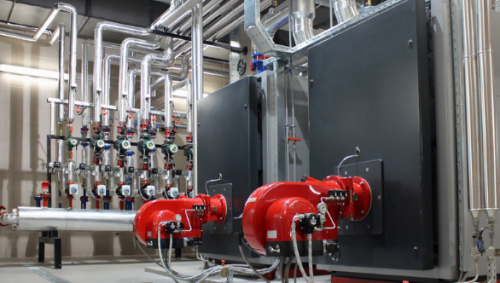Table of Contents
While there is a growing need to protect the environment, achieving business growth without environmental costs is also necessary. Corporations are increasingly turning green to combat the adverse effects of climate change, which is achieved using carbon accounting tools.
To combat climate change, the world is steering towards effective mitigation decisions regarding carbon. In this age, it is prevalent to find businesses steering away from choices that negatively impact carbon reduction.
What Is Carbon Accounting?

This is a practice aimed at calculating how much carbon a company or country emits and setting goals to limit it. Also known as greenhouse accounting, it involves calculating the climatic impact of greenhouse gas (GHG) emission inventory – a repository of GHG emissions by a company.
As the world wakes up to the climatic emergency, several corporations aim to become carbon neutral by accurately reporting on their carbon reduction efforts. Carbon accounting is divided into two categories:
Physical Carbon Accounting
Physical carbon accounting involves the measurement of both direct and indirect carbon emissions from an industrial activity into the Earth’s atmosphere. This is also referred to as a greenhouse gas (GHG) inventory.
Once the amount of carbon being emitted into the atmosphere has been established, a reduction target is set in place by an organisation or industry. This method helps assign responsibilities to different parties for their role in carbon emissions.
Financial Carbon Accounting
On the other hand, this aims to give the carbon emissions produced and absorbed a financial market value. Financial carbon accounting is based on the value of carbon emissions that can be traded in the carbon market.
This is an innovative funding tool that allows companies an opportunity to offset their emissions with carbon credits earned from sustainable products.
Why Is Carbon Accounting Important for Your Business?
Every corporation has a role to play when it comes to the management of carbon emissions. Knowing the precise amount of carbon your company emits helps set a reduction target. This provides insight into the quantity and measure of your company’s carbon emissions and helps make informed decisions for mitigation strategies.
A reduction in carbon emissions is equivalent to a reduced financial impact on energy crisis. As you know, energy costs money. Therefore, when carbon emissions are reduced, and cheaper and renewable energy is focused on, the cost of production is reduced, which means businesses get to cut costs while producing.
By tackling environmental issues like greenhouse gases, an organisation gains credibility in the eyes of the public, and this can influence consumer choice. This act is a great initiative for a company’s PR, as research has shown that customers are more willing to trust organisations with long-term environmental goals.
6 Ways To Grow Your Business By Going Green
While it is evident that carbon accounting makes it possible to examine the number of emissions an organisation produces, the success of a carbon audit solely depends on its appropriation by the stakeholders. So, here are six ways to grow your business by going green.
1. Move To A Renewable Energy Supplier


Changing to a renewable energy supplier will help reduce your carbon footprint by lowering the whole scope of two emissions linked to your business. Search for green tags, also known as Renewable Energy Certificates (RECs).
These are non-tangible energy certificates that are tradable. They prove that one megawatt-hour (MWh) of electricity was produced from a suitable renewable energy source.
2. Digitalise Your Company’s Carbon Accounting
No matter how many environmentally friendly practices your business employs, it will still produce some GHGs while conducting business. Digitalising your company’s carbon accounting on all scope is a great solution to keep up with these gaps.
Digital carbon tracking can help reduce these emissions, which can be achieved with the assistance of Greenly. This climate software can break down your carbon accounting and help you figure out what you need to do in the future. This could offer offsetting projects that are durable in the long-term and provide accurate carbon footprint data despite a company’s size.
3. Reduce Your Carbon Footprint Through Air Travel And Commuting
Choose to travel less and use software applications like Zoom and Skype to hold meetings. For domestic trips, try using trains. Also, consider implementing a cycle-to-work strategy to encourage employees to use lower GHG-emitting transport forms.
Another way to reduce emissions from a trip is to introduce remote work models. Working remotely completely removes emissions from an employee’s daily commute, and the usage of electricity appliances from the office is lessened.
4. Improve The Efficiency Of Your Heating And Cooling Systems


Install temperature controls to help manage heating and air conditioning. You would prefer the temperature of the workspace to be set correctly. You wouldn’t want opposing temperature control systems to overlap, as this would consume lots of energy.
Teach your employees methods of energy conservation, like reducing the temperature of workspaces. Also, ensure your boiler is serviced regularly to confirm if it is operating as it should. High-efficiency boilers can convert about 92% of consumer energy into usable energy while using only 8% of the energy collected from fossil fuel combustion.
5. Reuse And Recycle


In your supply chain, use recycled materials when possible. Employ sustainable procurement when using items such as paper, packaging, phones and laptops. Ensure that there are efficient recycling schemes in place throughout the organisation.
Additionally, the use of second-hand furniture should be considered. This lessens the demand for natural resources and doesn’t strain your wallet.
6. Print As Minimally As Possible
Office paper also can have a high carbon footprint. An average office worker uses about 10,000 sheets of copy paper annually. This shows how paper can considerably increase your carbon footprint. Focus on digitised systems and leave paper-based systems behind. However, it is best to proceed cautiously because data centres have a large carbon footprint.
Conclusion
Organisations are significantly reducing their overall GHG emissions to become fully committed green businesses. Due to pressure from stakeholders and climate change, many businesses are now publishing their carbon footprints. Hopefully, the tips above will help your company transition to carbon-neutral business practises and become a part of this historic shift.






































